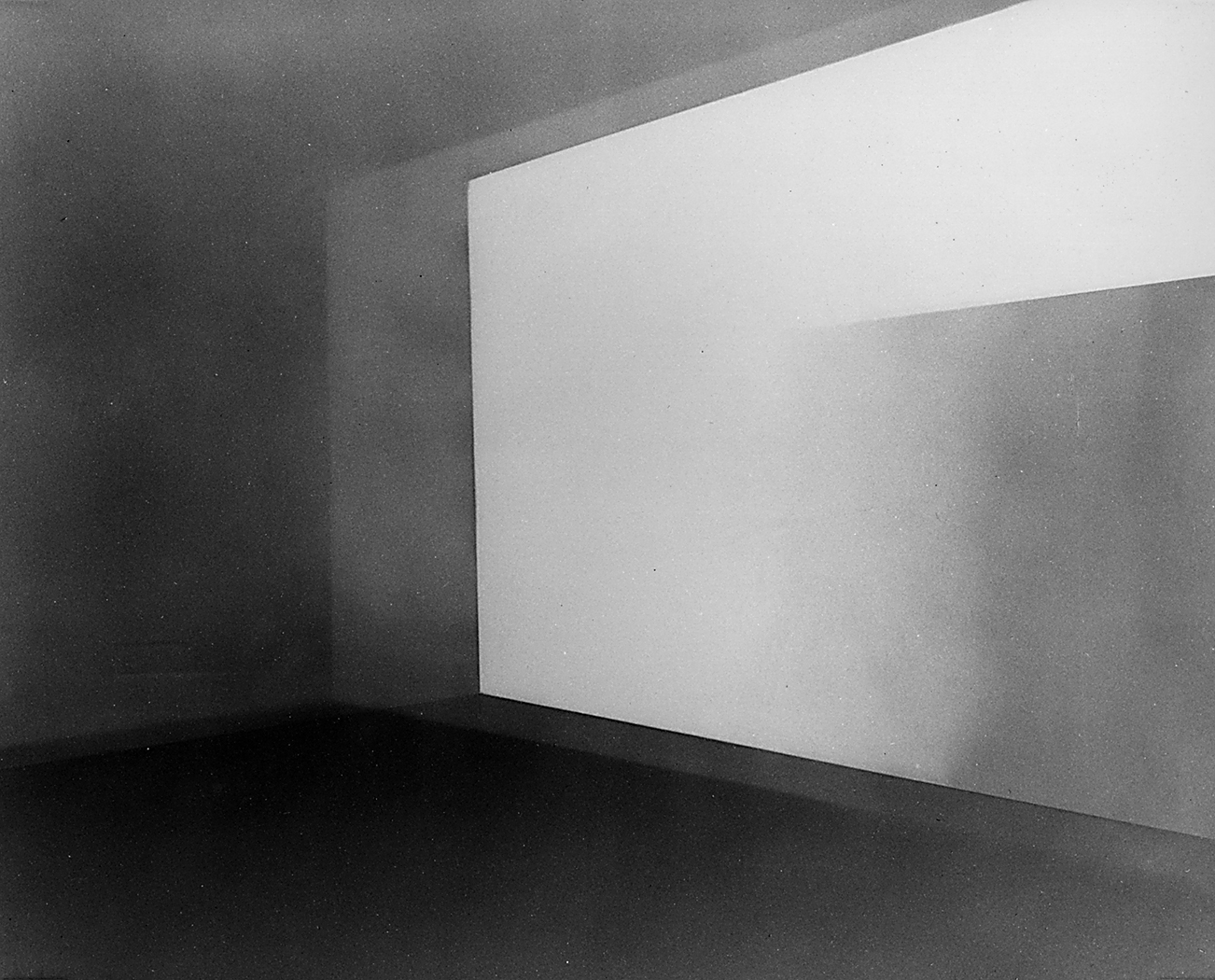



Your Custom Text Here
Zimmerman’s graphite drawings on mylar are predicated on interrelated regularly-shaped solids and voids. Some of these drawings represent imaginary architectural settings consisting of wall planes punctured by rectangular doors and windows, and in the drawings the light that falls across the forms generates sharply defined shadows as forms in their own right. Since the drawings are rendered exclusively in black and white, the wall planes that are shaded in half tones appear to be partially or fully transparent, and it is, therefore, impossible to decide whether a form represents wall or shadow. Just that impossibility reiterates an important aspect of Zimmerman’s works in which substance seems to masquerade as shadow and vice-versa.
-Charles F. Stuckey, 1982
Zimmerman’s graphite drawings on mylar are predicated on interrelated regularly-shaped solids and voids. Some of these drawings represent imaginary architectural settings consisting of wall planes punctured by rectangular doors and windows, and in the drawings the light that falls across the forms generates sharply defined shadows as forms in their own right. Since the drawings are rendered exclusively in black and white, the wall planes that are shaded in half tones appear to be partially or fully transparent, and it is, therefore, impossible to decide whether a form represents wall or shadow. Just that impossibility reiterates an important aspect of Zimmerman’s works in which substance seems to masquerade as shadow and vice-versa.
-Charles F. Stuckey, 1982
Untitled XXIII, 1973-1977, graphite on mylar, 18"H x 24"W
Untitled V, 1973-1977, graphite on mylar, 18"H x 24"W
Untitled III, 1973-1977, graphite on mylar, 18"H x 24"W
Untitled (from photo), 1973-1977, graphite on mylar, 30"H x 60"W